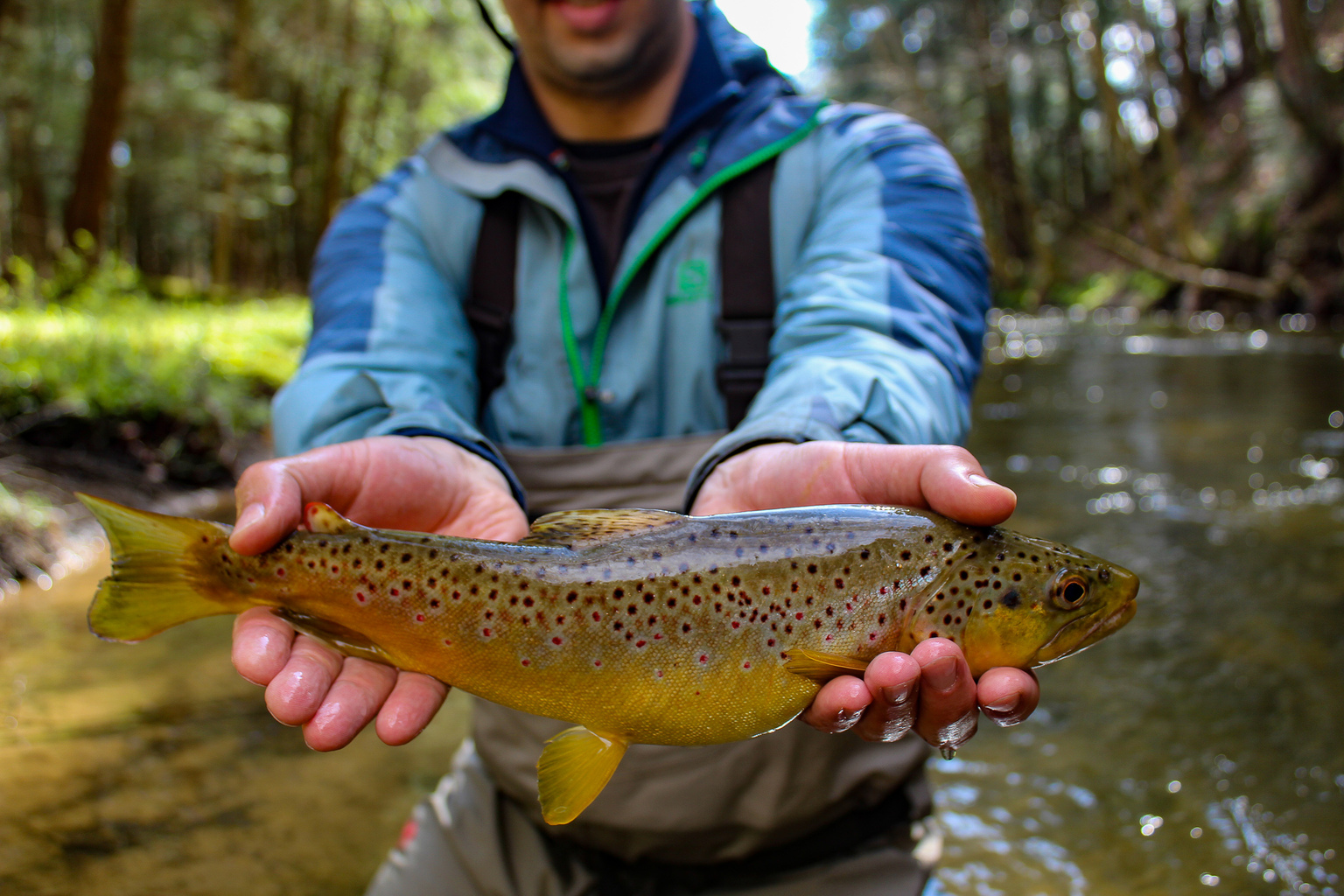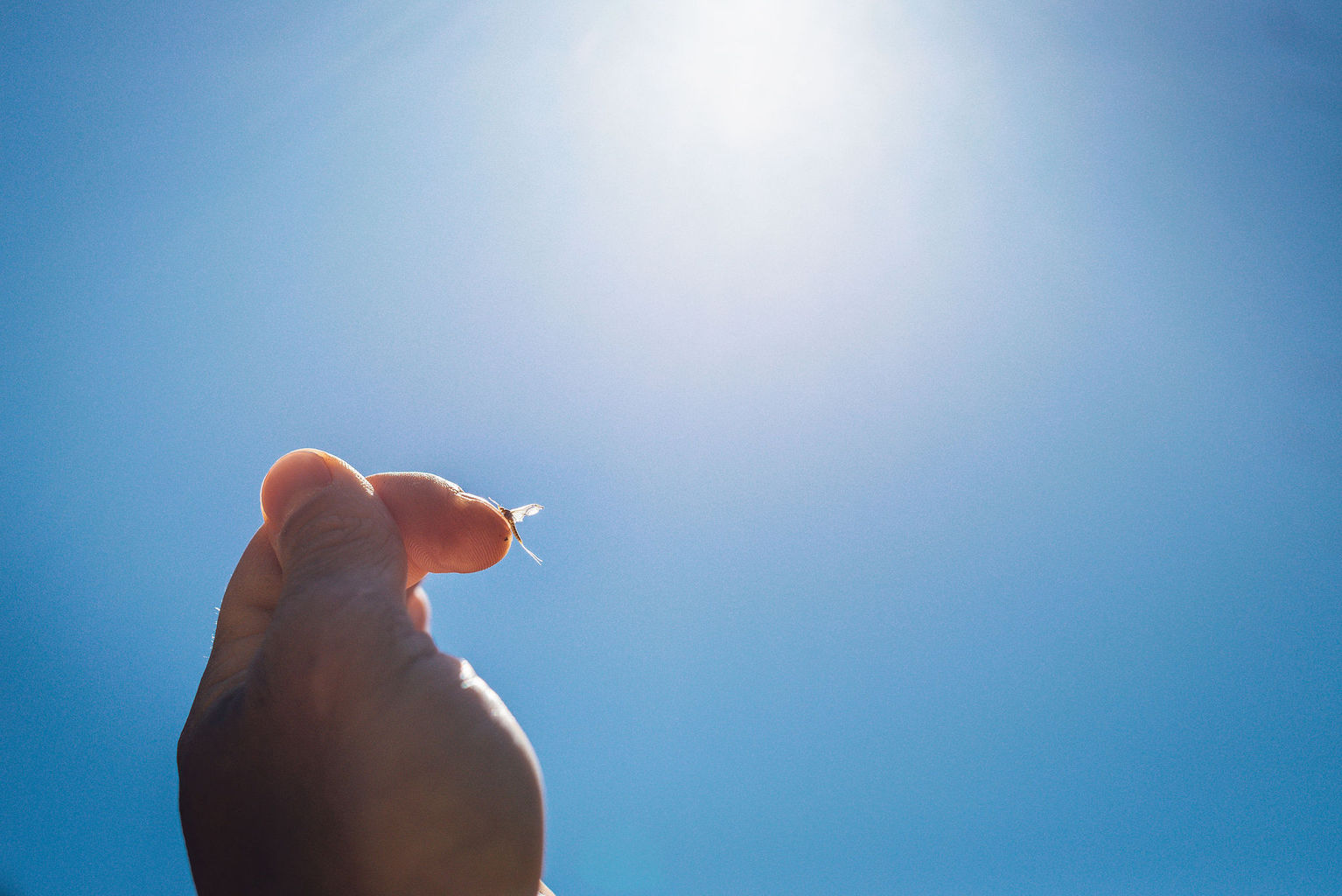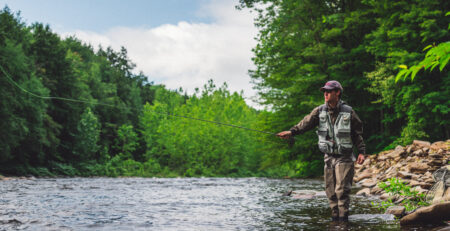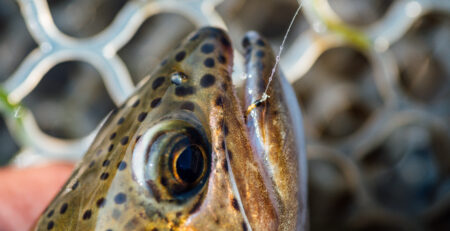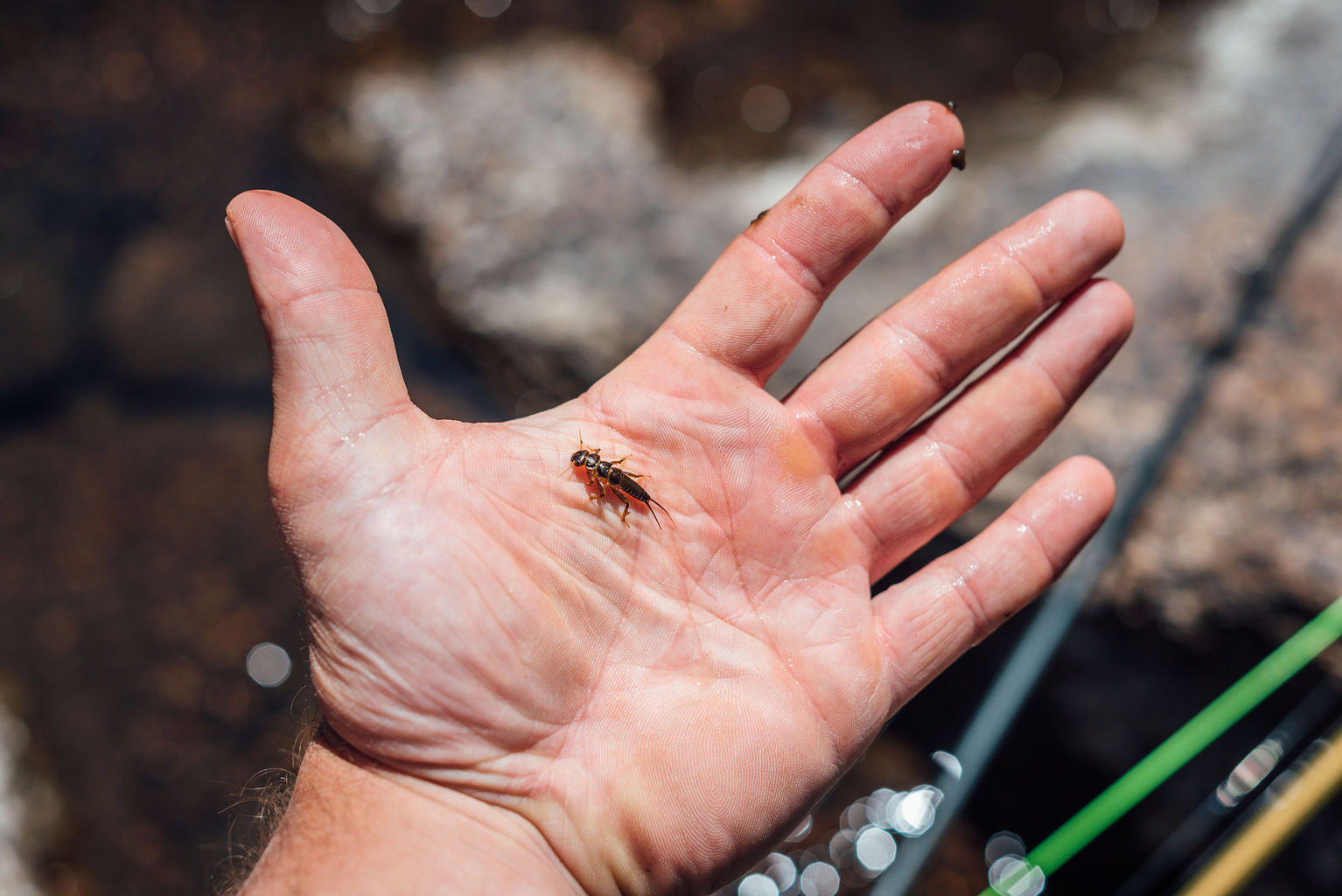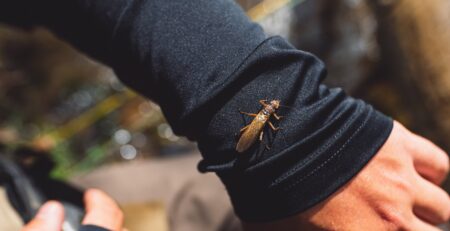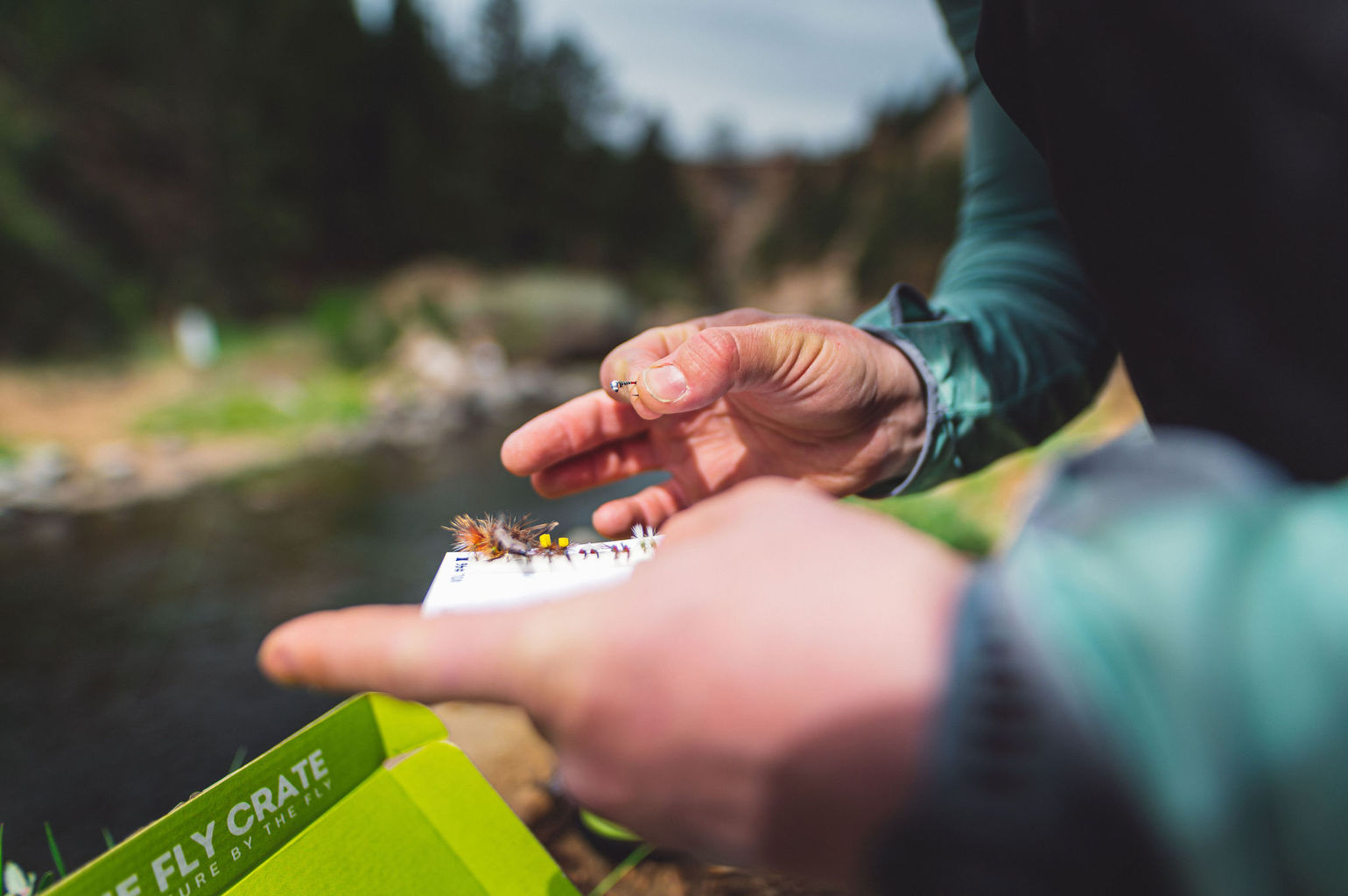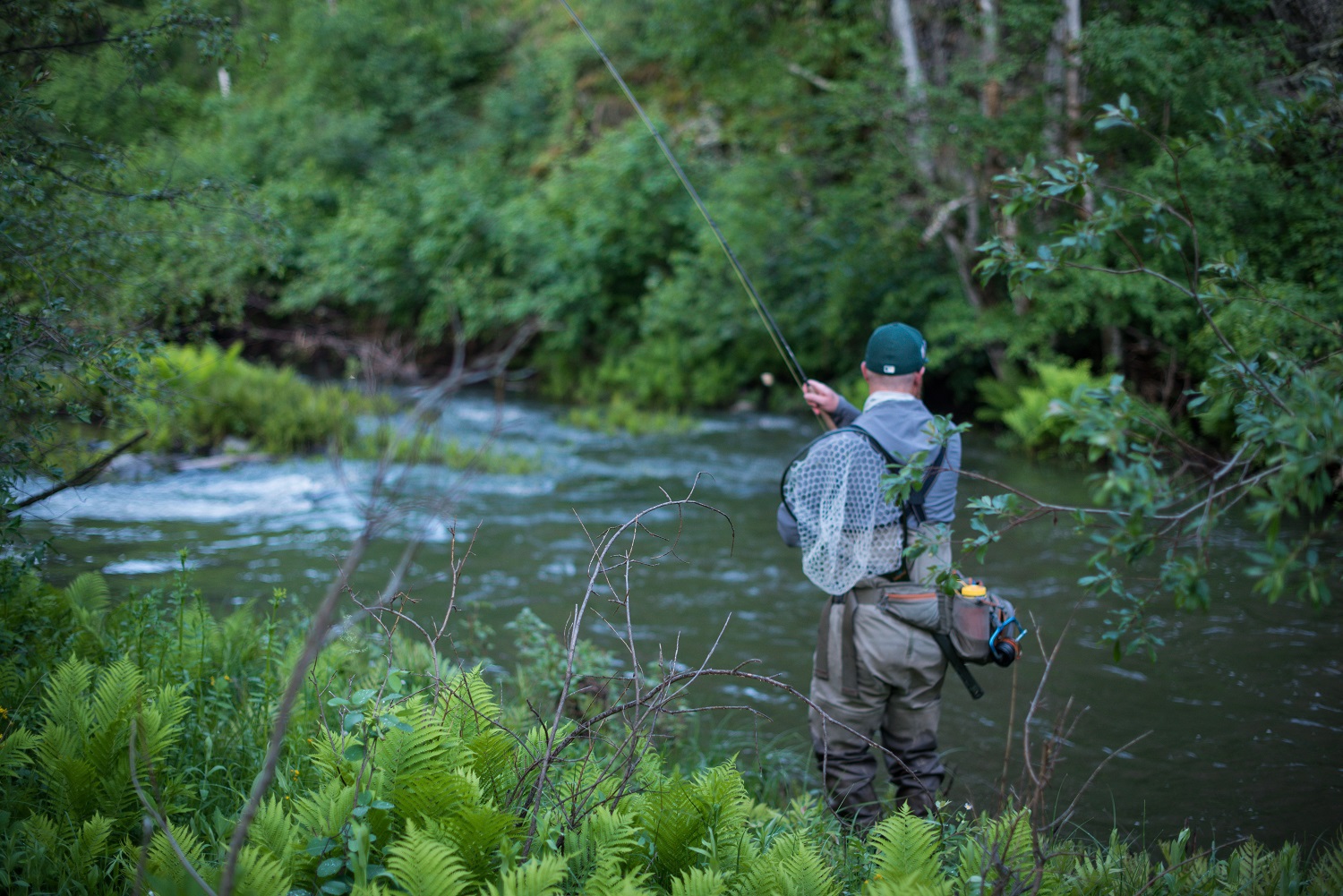Effective Dry Fly Fishing For Rising Trout: A Delicate Presentation Is The Best Presentation
A delicate presentation helps keep your fly afloat longer.
After work, I can’t wait to rush out to the stream and get fishing. Often times I arrive just before dusk and right in the middle of a hatch.
My adrenaline kicks in and my heart rate spikes. Seeing so many mouths feeding makes me want to dish out as many casts as I can.
I quickly shuffle through my fly box and select an appropriate pattern to match what’s coming off, which is usually a parachute dry fly of some sort. Almost like ‘Whack-a-Mole’, I time my casts a few feet in front of rising fish and move from fish to fish in between rises.
My buddy likes to call this, “Spreading the love.”
Basically, I focus my attention only on rising fish within 40 feet in an attempt to maximize my chances. It’s not the wisest technique nor the most effective but it helps keep me from ‘putting down a fish’ by casting to a specific trout too much.
Why It’s Important
During these rampages of rapid-fire casting, you can guarantee that your neglected dry fly will soak up water and sink.
At this point, I give my drenched fly one more cast as a Hail-Mary, which rarely works. With even the slightest amount of drag or water turbulence the fly dips below the surface and ruins my chances. That’s when I bring it in to dry it off with my shirt and or floatant. Now I’m not saying that a dry fly turned wet fails to work. In fact, occasionally I will still get strikes on a sunken dry fly, however, I find it so much more effective to present the pattern as it was intended, high-and-dry.
Fly Fishing Made Easy 👍
Our Quarterly Fly Club ships 1,000’s of flies to anglers all across the United States. Receive curated fly assortments selected for the season with in-depth articles on how to fish them. Great for beginners to learn and for intermediates to discover new flies.
When a dry fly sinks it is difficult to manage drag and the overall ‘dead-drift’ performance because it is hard to see. Drag is the main culprit behind why your flies fail to produce. Sure your fly looks natural but it will move differently on the surface than a real insect would. The combination of your line stretched out on the water and the currents pushing and pulling against it ruin your chances.
How To Help Keep Your Fly From Sinking Prematurely
There are 3 great ways to help prevent your dry flies from sinking too quickly.
- Mending – currents can drag your line down and away, which will pull your fly under.
- Dry Fly Floatant – add more buoyancy to your patterns temporarily
- Delicate Presentation – instead of slapping your fly down on the water and forcing it and your line deeper, let it drift down gently onto the surface and rest on the water tension.

Mending
Mending is the act of using your rod to pick up and reposition your line against the current to perfectly present your flies with minimal drag.
Currents crisscross and overlap throughout the stream, and, because of this, your line gets pushed and pulled in all sorts of directions. This movement only pulls your dry fly under like a weight.
Mending is great because you reposition your line on the surface of the water in areas of intersecting currents so that your fly drifts majestically on top without any unnatural movement or getting dragged under.
Dry Fly Floatant
Whether it is with powder, beads, or liquid, floatant is designed to offer extra buoyancy to dry flies. Once applied, floatant repels water and resists the natural urge of a flies material to absorb water. It tends to work more effectively when it is applied to a dry or near-dry fly.
Although necessary for serious anglers, floatant is a temporary fix and will need to be reapplied after a few casts. Figure, at most, a dozen casts.
I must say if you don’t feel like spending money on dry fly floatant using your shirt to pat the fly dry can also work. Another method I use occasionally is to carefully place the fly between my fingers and blow directly into its hackles and body. Think of it as a hair-drying your fly.
For CDC flies, more maintenance is required as it is a less durable material and relies on its naturally oily down feathers. Stick to a shake-style floatant with tiny beads that absorb the water from the drenched CDC material.

Delicate Presentations
When it comes to putting a small dry fly perfectly presented in the line of a rising trout, it can be easy to overreact and smack a fly down on top of them. Unfortunately, that ‘smack’ of the fly and your fly line will often discourage trout from taking your fly because a little mayfly spinner doesn’t have the force of a large grasshopper when it hits.
Simple physics right? A dense, heavy insect will make a bigger impact on the water while a small, light insect will make a soft impact. So there is no reason why your size #20 blue-winged olive emerger should put a crater in the surface film like an asteroid. Instead, have it gently land onto the water like a feather.
You can certainly test this principle out, too. Take a blue-winged olive fly and place it on the water a foot or two in front of a rising trout. You’re probably not going to see that trout emerge and take your fly.

If you’re not the best at casting and can’t avoid a heavy impact with your line smacking the water, present your fly farther ahead of where the trout are rising and don’t let your fly line land on top of the fish. It’s much better to position yourself or angle your cast so your fly is the first thing the trout will see.
To achieve a delicate and soft presentation, aim for the trees. Yes, aim for the trees and let your fly level out above the water then gently drift down. Instead of your fly carrying that momentum down into the water, it loses all that energy and stalls. Something like the Wile E. Coyote when he ran out over the edge of a cliff and plummets to the ground below. Notice how he sort of hangs there mid-air below dropping? Your line and fly should hang there, too, for just a split second.
Highly Buoyant Dry Flies
-
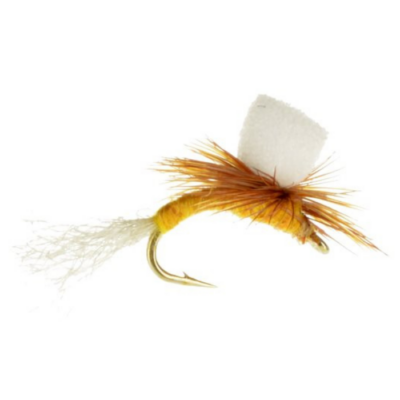 Sulphur Foam Para Emerger$1.90
Sulphur Foam Para Emerger$1.90 -
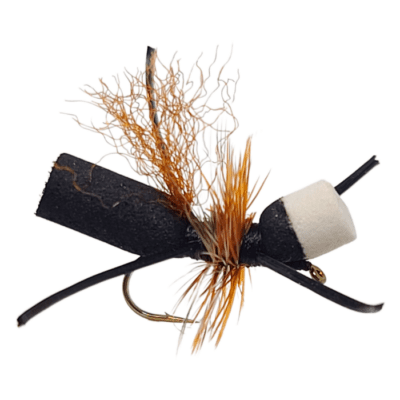 Bionic Foam Ant$2.19
Bionic Foam Ant$2.19 -
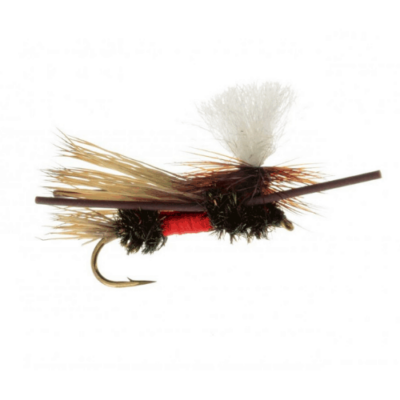 Madam X$2.56
Madam X$2.56 -
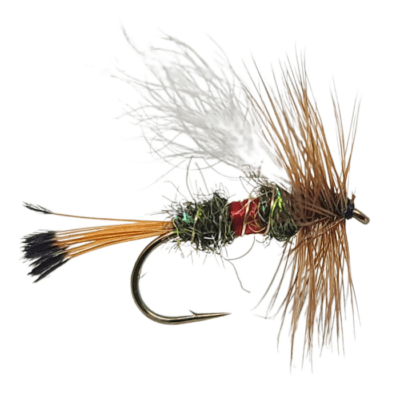 Royal Trude$2.05
Royal Trude$2.05 -
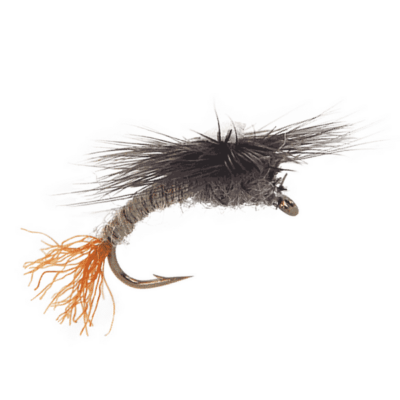 Foam Para EmergerOriginal price was: $1.90.$1.60Current price is: $1.60.
Foam Para EmergerOriginal price was: $1.90.$1.60Current price is: $1.60. -
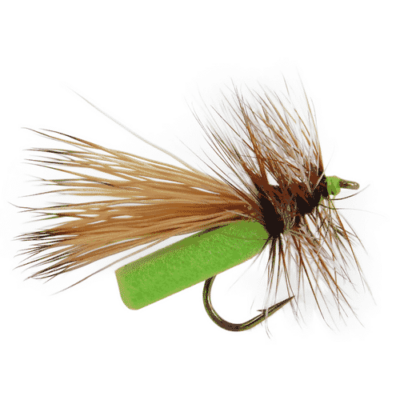 Neversink Caddis$1.69 – $1.90
Neversink Caddis$1.69 – $1.90 -
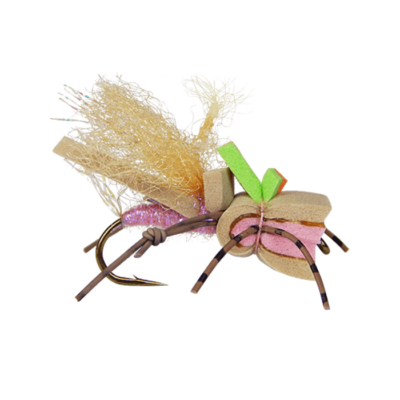 Snyder’s Mad Hopper$2.25
Snyder’s Mad Hopper$2.25 -
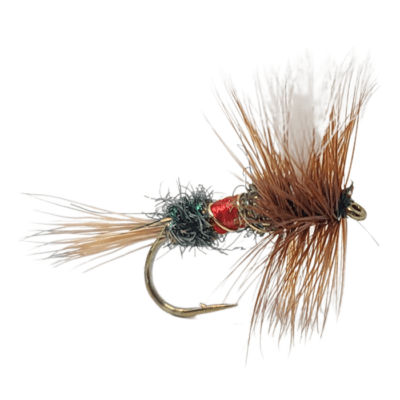 Royal Wulff$2.19
Royal Wulff$2.19



